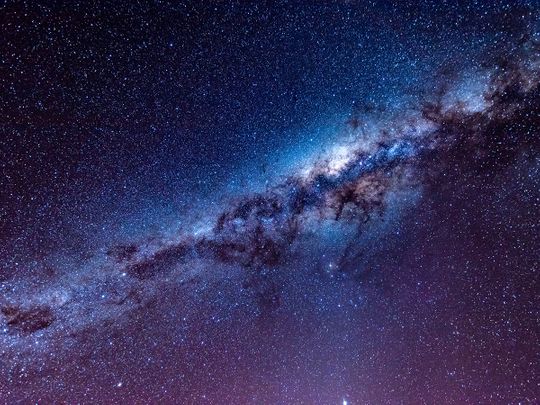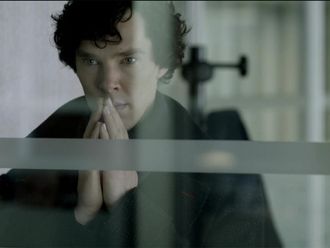
Every star you see in the night sky belongs to the Milky Way – our home galaxy, and just one of trillions of galaxies in the universe.
Click start to play today’s Crossword, where you can spot the Milky Way in one of the clues.
Astronomers estimate that our spiral, star-spangled galaxy is about 13.6 billion years old. Here are some more facts about the Milky Way that are strange, wonderful and awe-inspiring:
1. The Milky Way is mostly flat
The Milky Way is about 100,000 light-years across, but only about 1,000 light-years thick. It resembles a flat, somewhat warped disc, and holds our solar system in a curved arm full of dust and gas. It’s fortunate our planet’s location is about 26,000 light-years away from the galaxy’s core, which is always turbulent and features an enormous black hole.
2. Earth is 18 years old
In galactic terms, Earth is just 18 years old. Even though our solar system travels through interstellar space at a dizzying speed of 804,672km/h, it takes Earth about 250 million years to travel once around the Milky Way. Since our planet is about 4.5 billion years old, it’s been in this exact spot several times. In fact, the last time it was here, the continents on Earth were not in the same place they are today, and dinosaurs were just starting to explore the planet, according to a January 2018 report in National Geographic.
3. There’s a massive black hole in the middle of the galaxy

It’s not just massive, it’s considered to be ‘supermassive’. Called Sagittarius A*, the black hole at the centre of the Milky Way weighs more than 4 million times the mass of the sun. At just 26,000 light-years from Earth, it’s one of the few black holes in the universe that scientists can actually monitor and study consistently. This black hole is the centre of our galaxy, and everything in the Milky Way, including our solar system, orbits Sagittarius A*. For a long time, it was difficult to observe the black hole, since it’s shrouded by a thick screen of dust. But in May 2022, the Event Horizon Telescope captured a striking image of the behemoth, allowing the world to view it clearly for the first time.
4. The Milky Way is an island
Picture an island in a river – the Milky Way acts like one, except that it’s in a stream of stars. However, any stars that come too close are promptly swallowed up by the Milky Way. Scientists have found over 24 fain streamers of stars at the fringes of our galaxy, which indicate remnants of past galaxies. These wispy trails formed when the Milky Way’s powerful galaxy ripped apart smaller dwarf galaxies, leaving behind glittering debris. Some of these streamers have been given Aboriginal names, and others, near the Indus constellation, have received the names of Indian rivers, like Jhelum, Chenab and Ravi.
5. We have ancient neighbours
Our galaxy is surrounded by more than 150 ancient clusters of stars – some of them are considered to be among the oldest in the universe. Known as globular clusters, these incredibly old stars live in the Milky Way’s halo – dark matter that surrounds the galaxy – and orbit the galactic centre. Each of these clusters is home to thousands of stars!
Have you observed the Milky Way on a dark night? Play today’s Crossword and tell us at games@gulfnews.com.




